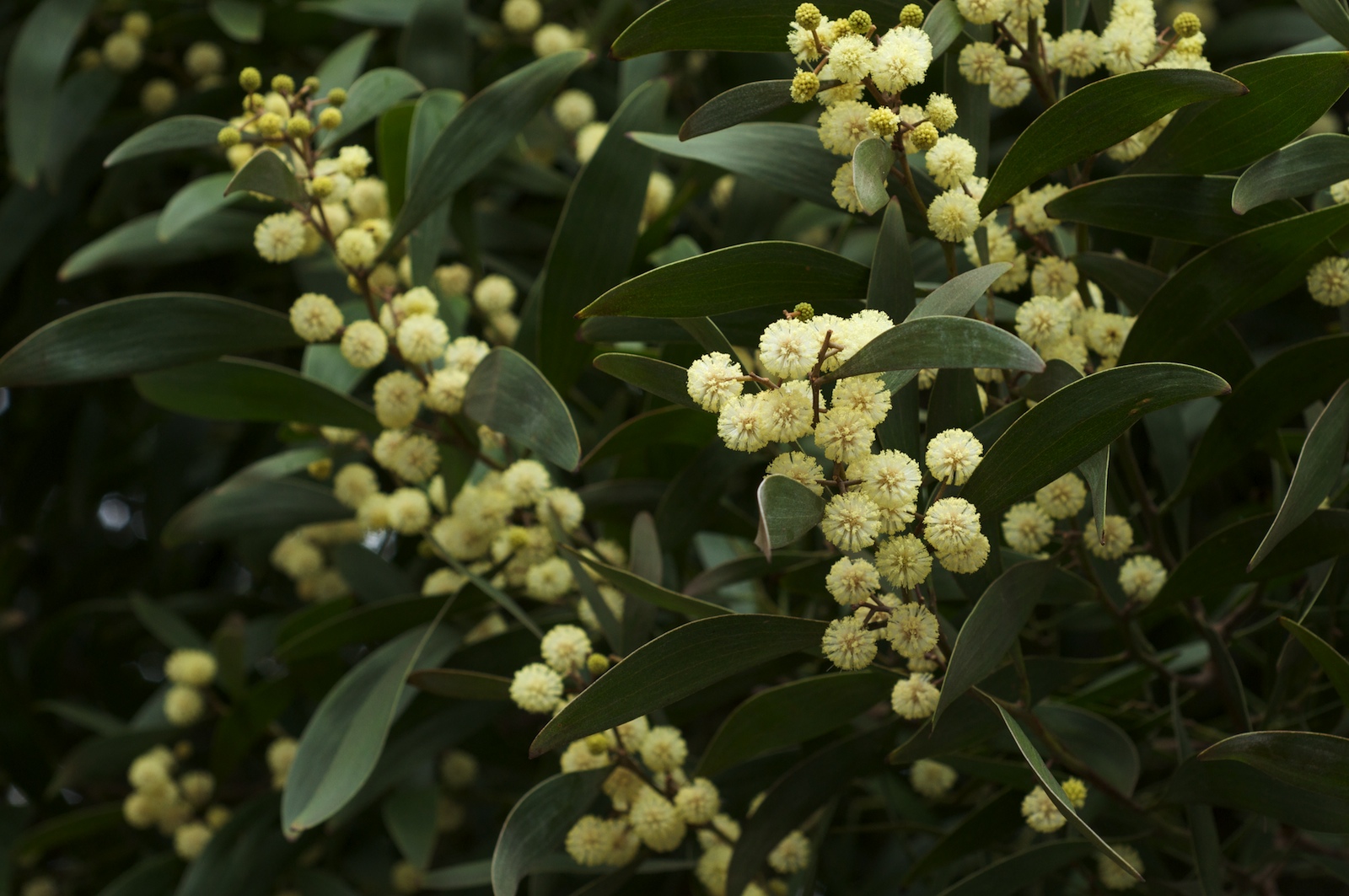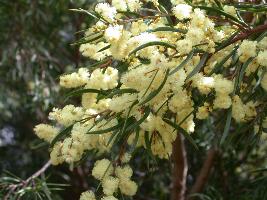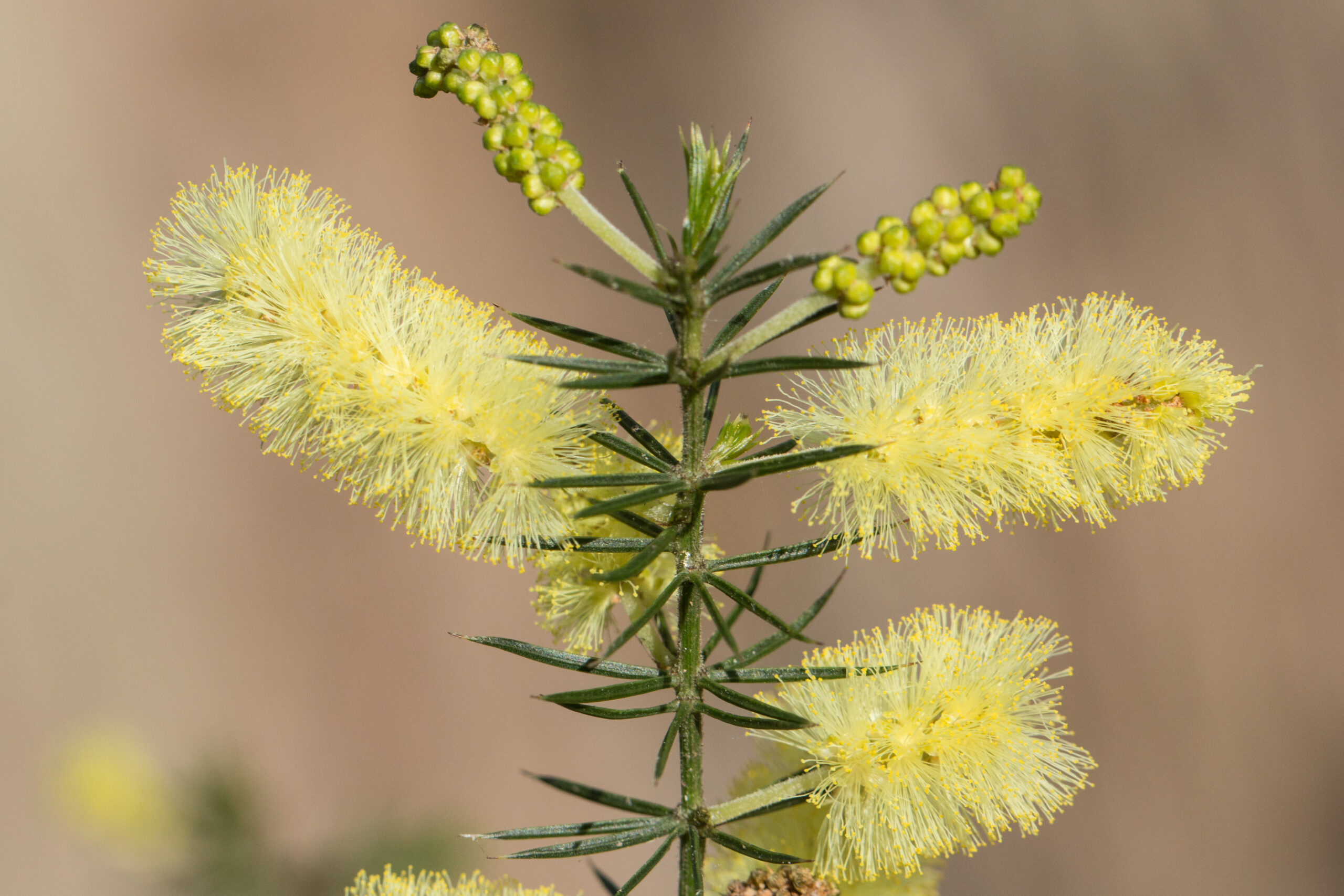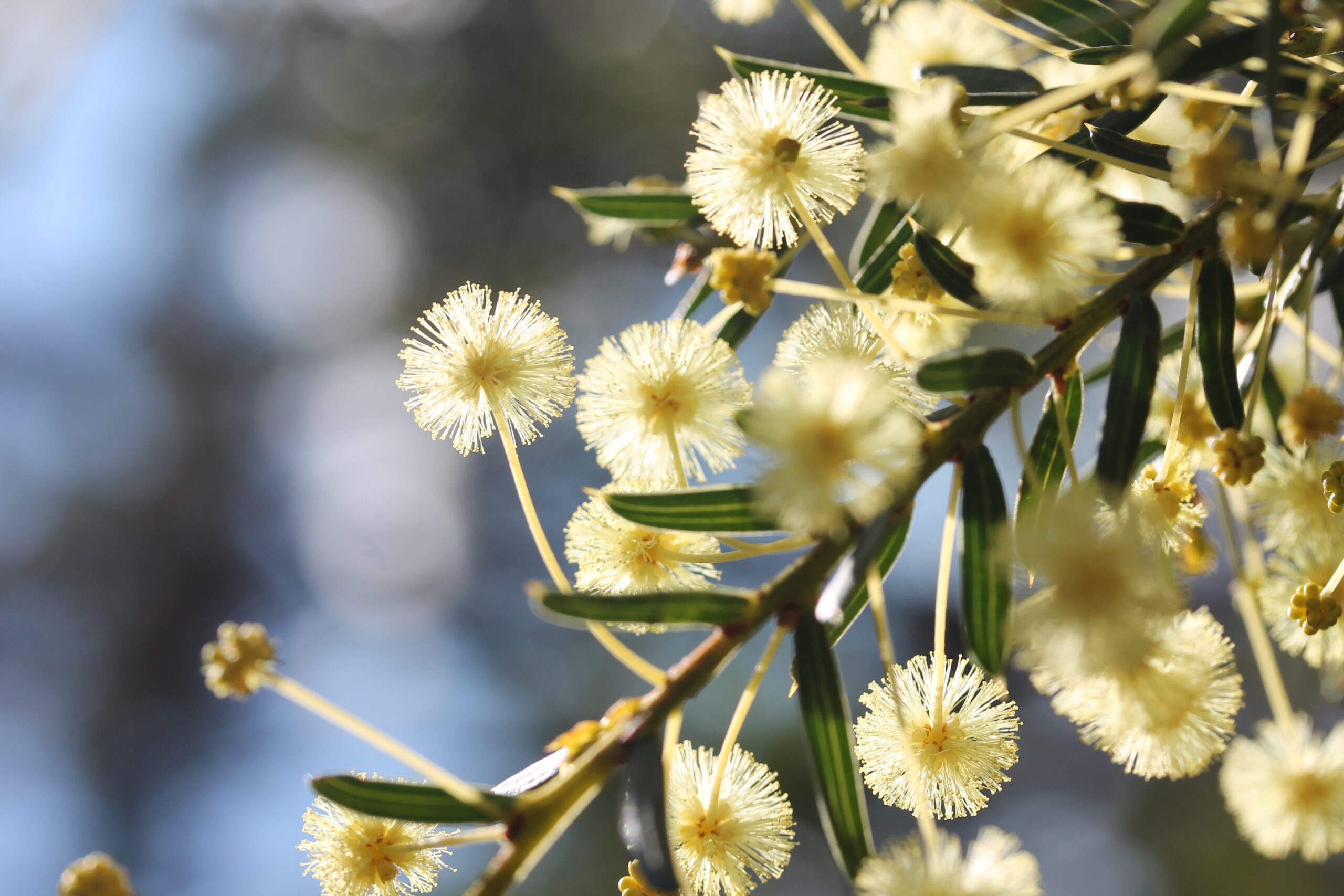September 1 is National Wattle Day! The splashes of yellow across our hillsides that starts in mid to late winter is a welcome and colourful sign that spring isn’t far away. Tasmania is home to 20 naturally occurring species of wattle, of which four are endemic. In our southern region, we have three state-listed wattle species – one of which is also federally listed. In celebration of our national emblem, here’s a spotlight on some of the rarer and more common wattles that you can find in Tasmania’s southern NRM region.

Blackwood (Acacia melanoxylon)
One of Tasmania’s most well-known and prized timber trees, Blackwoods can grow into a large, dense spreading tree . Adorned with cream flowers in spring, it is excellent for erosion control and shelter belts.

Coast Wattle (Acacia longifolia var. sophorae)
Coast Wattles is an important component of coastal vegetation involved in beach-dune processes and dynamics. Native to the coastal districts of much of eastern and southern Australia (including Tasmania), it has become a weed in some areas where it has naturalised beyond its native range.

Dagger Wattle (Acacia siculiformis)
Listed as rare on our state listing of threatened species, Dagger Wattle is found across the centre to the east coast of Tasmania. Although it has a relatively broad distribution, available data suggests that subpopulations are small and that the total population is less than 5,000 plants.
Derwent Wattle (Acacia derwentiana)
This species is rarely found in the wild and is only restricted to a few areas in the Derwent Valley. It can be found along the banks of the Derwent River and its tributaries (including the Tyenna and Broad Rivers), as well as the tributaries of the Prosser and Carlton north and east of Hobart.

Hop Wattle (Acacia stricta)
This species is found across Tasmania and the eastern Australian mainland. It is a fast-growing shrub that makes a good windbreak under taller trees and is common in dry areas.

Juniper Wattle (Acacia ulicifolia)
Classed as rare on Tasmania’s state listing of threatened species, the Juniper Wattle is found on sandy coastal heaths, open forest and woodland in the north and east of Tasmania. This small shrub has single cream-yellow flowers. It is effective as an informal hedge where its prickly habit can deter access to particular areas and provide refuge for small birds.

Midlands Wattle (Acacia axillaris)
Classed as vulnerable on state and federal threatened species lists, the bushy Midlands Wattle is a rare shrub with distinctive flower heads that only contain a few flowers. The main threats to the long-term survival of midlands wattle is land clearance and a decline in the quality of habitat in agricultural areas.

Prickly Moses (Acacia verticillate)
Common across Australia’s southeast, Prickly Moses flowers with a profusion of yellow blossoms in spring. It is useful as a coloniser of disturbed ground and provides excellent habitat for native birds.
Rice’s Wattle (Acacia riceana)
Endemic to Tasmania’s southeast, Rice’s Wattle is a small, fast-growing shrub that is mainly found in the Derwent, Huon and Prosser River Valleys.

Silver Wattle (Acacia dealbata)
Commonly found throughout Tasmania’s wet forests, Silver Wattles are often the first plant to establish in disturbed areas of wet forest. They serve an important function in preparing the soil for longer lived species that establish later. When mature, this acacia is used for furniture and other timber products and is a good species for erosion control and shelter belts.


